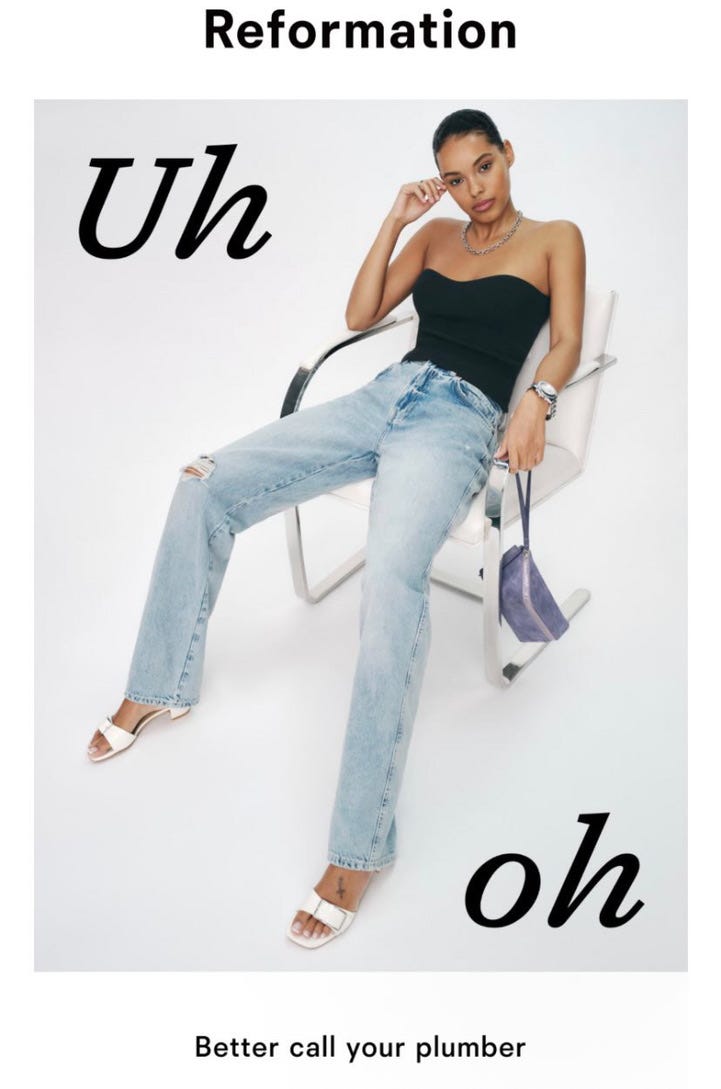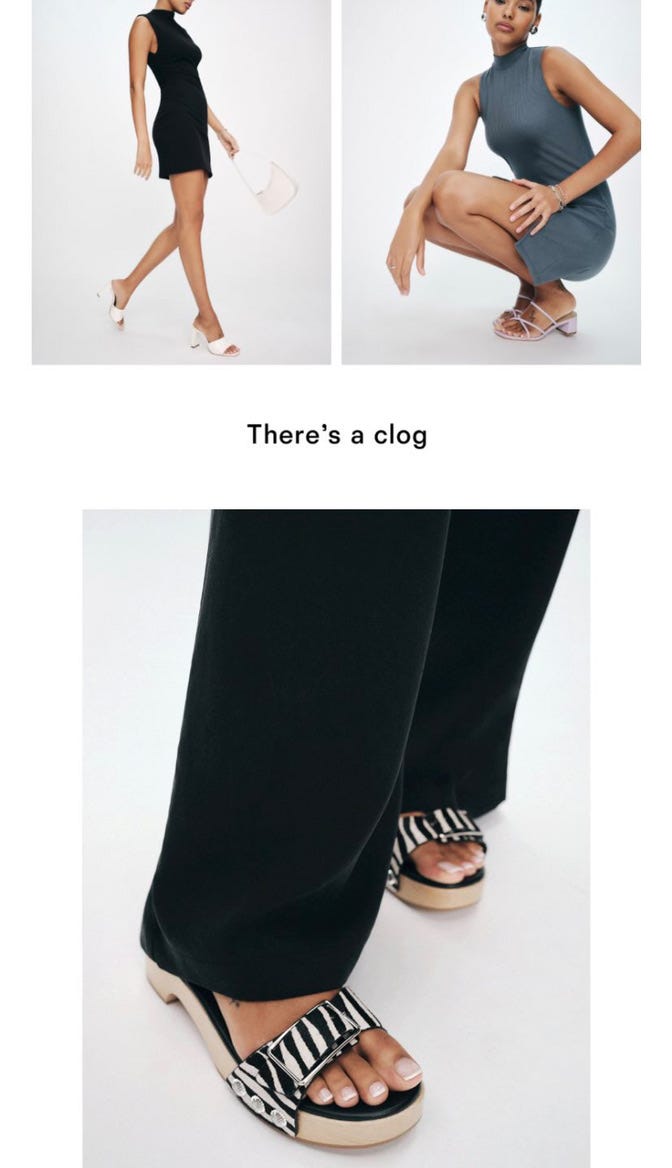Several times a week, I have a few spoonfuls of vanilla ice cream before bed. This is because sugar, egg yolks, and full fat cream send a message to my brain that I am safe, secure, and loved. For a few minutes of my day—when I’m eating the ice cream—I am totally relaxed. So you can imagine my unease when I peeled the lid off a fresh pint to reveal the following message:
Dear Mouth,
Enjoy.
Sincerely,
Lid
Reddit-tier attempt at humor aside, I simply hate this. Why am I being addressed as “mouth”? Why is only “lid” addressing me at all, and formally at that? Why am I told merely to “enjoy”—a surefire way to lose one’s appetite—when “lid” went through the trouble of both a salutation and a sign-off?
But that’s not really why I hate this. I hate this because, while there are technically words in front of me and I am reading them, they say absolutely nothing at all. In staring at my pint of vanilla ice cream, I stare into the void, written in what I’m sure the marketing team called a “bold-yet-approachable sans-serif font.”
I know what the devil’s advocates are going to say. They’re going to say, in that sleeve-tugging, actually-you-did-assign-homework-way, “Erm, this is actually good copywriting because you’re talking about it.” No, it is not. Sloppy, attention-grabbing things are not good, or even effective, simply because we noticed them. Besides, I don’t think anyone would have noticed this copy at all. And that is precisely the problem.
I am by no means an expert in what constitutes brilliant advertising. (Frankly, I’m not sure there is such a thing.) But I love words, and I love to laugh, and I want to talk about the language we encounter thousands of times a day: the language of the marketplace.
For the most part, we communicate using images and words. From cave paintings to epic poems, traditional print advertising to memes, photography to fifteen-second Instagram Reels. But in the commercial realm, we’ve relied so much on the image, and the so-called experience (read: pop-up) of something, that the copy has suffered.
Images offer an immediacy that words cannot. (You actually need to read words, whereas you can take in the intended effect of an image in a fraction of a second.) Words used to be at least half the game, but now they’re essentially used as filler, degraded, banished to the shadowy realm of the Instagram caption. Copy is like a neglected dog, chained to a fence. She doesn’t even bark anymore.
A few years ago, you could slap GigiBellaKylieKendall’s face on something, call it “epic,” and still manage to drum up sales. But the world has changed. People no longer trust brands and the modern consumer is extremely shrewd. If there was any trust left in corporations by 2020, the pandemic annihilated it. This is good; it’s about time we reckoned with these things. But rather than taking the new, hostile environment as a worthy challenge, many companies apparently decided the internet was too confusing, they’ll get criticized no matter what they do, so they may as well just phone it in or create chaotic, paralyzing memeslop.
Much of modern copywriting falls into one of two categories: embarrassingly lazy, or farcical and nonsensical. But a closer reading reveals something sad: companies barely have the confidence to market their own products. One often gets the impression, as a customer, that even the company doesn’t believe what they’re saying. People are rightfully worried about AI taking copywriting jobs, but the “AI mind virus” is already here. We’re already taking a machinelike approach to the whole endeavor. (I don’t blame the copywriters, by the way. The vast majority of copywriters I’ve met are quite talented and share these frustrations. I blame the useless focus groups and the spineless C-suite executives who refuse to take even the tiniest risk.)1
It’s sort of the written equivalent of the much-discussed Corporate Memphis art style (the big purple people) that plague the commercial sphere. These corporations don’t want to depict real people, lest they be called racist or something (the irony lost on them), so they efface the face to the point of parody. Similarly, companies don’t want to make any kind of written declaration, about their customers, their products, or themselves, that might turn off a potential buyer, so they just say vague, meaningless things like, “Meet the Anorak,” “The Soft Tee,” or “Kick back with your favorites.”2
By saying something, making any kind of statement, they are, by definition, not saying something else. To the feeble-minded middle manager, this is a missed business opportunity. The best strategy—they mistakenly think—is to market themselves to everyone. (Of course, when you do this, you appeal to no one. Even in the commercial sphere, sometimes the best approach is to say nothing.)
We’ve traded taste and humor for kitsch and schtick, emotional resonance for mind-bending tautologies like Lululemon’s current tagline, “Live like you are alive,” or [insert brand here3]’s “Everyday luxury.” (This “everyday luxury” idea might have worked the first time, but surely we must realize by now that, even to the wealthiest buyer, it is by definition NOT luxury if it is every day.) If everything is luxurious, everything is your favorite, everything is a part of your “everyday essentials”—nothing is.
Instead of coming up with a fresh way to communicate the benefits of a product or service, there’s always the tried-and-true, self-congratulatory “we fixed it” approach. We fixed razor blades. We fixed suitcases. We fixed mattresses. We’ve disrupted the toothbrush. Were these things broken? Or is there an opportunity to offer a D2C subscription service to internet-addled, Brooklyn-based millennials who desperately want to see a fiddle leaf fig on the homepage? It’s all so expected. If you’re in the market for some new glasses, you can bet that the round wire frame will be called The Churchill. Why would it ever be called anything else?
It’s also painfully obvious that so many of these companies don’t respect us, their customers. One second, I am praised as a discerning sophisticate, affirmed in my brilliance for merely selecting your product. The next, I am treated like a complete moron, as Allbirds holds me by the neck and slowly and forcefully explains to me what a shoe is: “No flashy logos. No senseless details. Just the world’s most comfortable shoes, made naturally and designed practically. It’s that simple.” I’m sure it is. Please let go of me.
The language of business is, too often, utterly meaningless. But don’t take my word for it. This has been the case for decades:
“Another segment of society that has constructed a language of its own is business. […] They are speaking a language familiar and dear to them. Its portentous nouns and verbs invest ordinary events with high adventure; executives walk among toner cartridges, caparisoned like knights. We should tolerate them—every person of spirit wants to ride a white horse. The only question is whether business vocabulary is helpful to ordinary prose. Usually, the same ideas can be expressed less formidably, if one makes the effort. A good many of the special words of business seem designed more to express the user’s dreams than to express a precise meaning.
[…]
This may sound like rhetorical snobbery, or plain stuffiness; but you will discover, in the course of your work, that the setting of a word is just as restrictive as a the setting of a jewel. […] One can’t be sure, really, what [these words] mean, and one gets the impression that the person using them doesn’t know, either, and doesn’t want to know.”
—Strunk & White, The Elements of Style (1959), Chapter V (“An Approach to Style”)4
Nowhere is this “constructed language of its own” more apparent than in B2B copywriting. It has reached the point to where it arguably is art, because it is so gestural so as to be nonsensical. It is not constrained by rules of logic, grammar, or style. “Achieve anything” (SAP), “Empathy-led service” (IBM), “Scale endlessly” (Salesforce). “Where the innovation pipeline comes in.” I am so sorry to be asking this, but where is that, exactly? What are you talking about?
When I read a tagline like “Emotionally Intelligent Sales” (Salesloft), I can imagine how people felt looking at a Jackson Pollock painting for the first time.5
In the spirit of being “empathy-led,” I will say this: we live in a chaotic world, driven by technology and algorithmic media, where everyone is fighting for attention and relevance. It is increasingly challenging to break through the static. In this world, focus groups, artificial intelligence, and designed-by-committee ideas do not cut through the chaos. When everything looks and sounds fake, hollow, or the same—people tune it out and don’t care. I would argue, especially in the age of AI, that truly compelling, creative ideas can only come from real people who combine sharp strategy, creative vision, hard work, a sense of humor, and perhaps most important: the instinct and courage to know a good idea when they see one.
Maybe copywriting isn’t trying to kill me, but it’s starting to break my heart. In 2025, the riskiest possible strategy involves no risk, and no heart, at all.
I know how hard it is to advocate for an original idea and navigate the obstacle course of “stakeholder signoff.” If this is your current situation, I am keeping you in my prayers.
You don’t know me and you DON’T know my favorites!!!!
The usual suspects: Aritzia, Everlane, et. al.
Sometimes I get questions from readers asking for writing advice. My advice is to read this slim volume, which my dad gave to me in high school as a gift. I reference it at least weekly, sometimes more.
Their current tag is: “Gain a Performance Force Multiplier.”











As a copywriter myself this speaks to my soul. I am so sick of “all in one” “delivered right to your door” “cut out the middle man” “AI powered technology” “meticulously crafted” babe no clothing company that’s VC backed on a Red Antler sans serif DTC online storefront makes anything that could pass as “meticulous” and most people don’t even understand what distinguishes true craftsmanship at all. It’s just a thing people say. Reformation usually kills it with their email subject lines, I’ll give them that. But their tagline is awful. “Being naked is the most sustainable option. We’re #2” like lol wearing thrifted clothes is #2 obviously. Maybe it worked when they launched but the second hand market has ballooned and the consumer is way more sophisticated.
My god, never have I felt so seen as a copywriter. My company primarily does CRM work (all those emails we all immediately delete), which makes it even more mindless. I really do think so much of the issues comes back to the devaluing of language & writing as craft. Because bound up in that is the need to assume that your reader/customer is intelligent—if you let go of that premise, you can produce whatever trite bullshit you want.